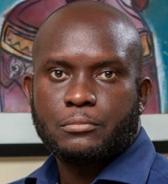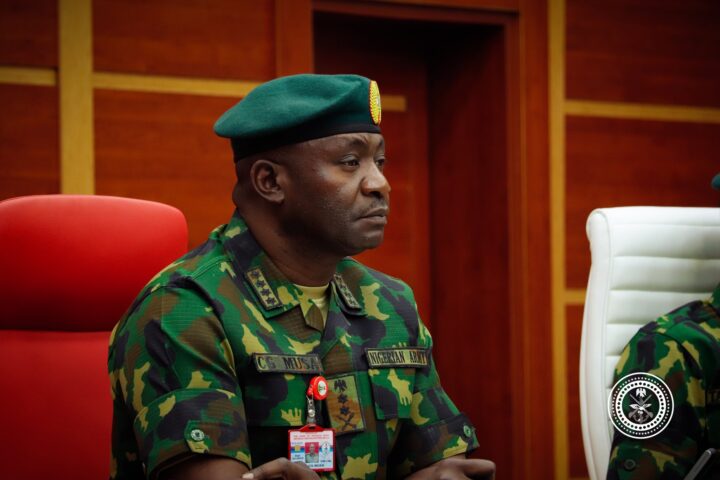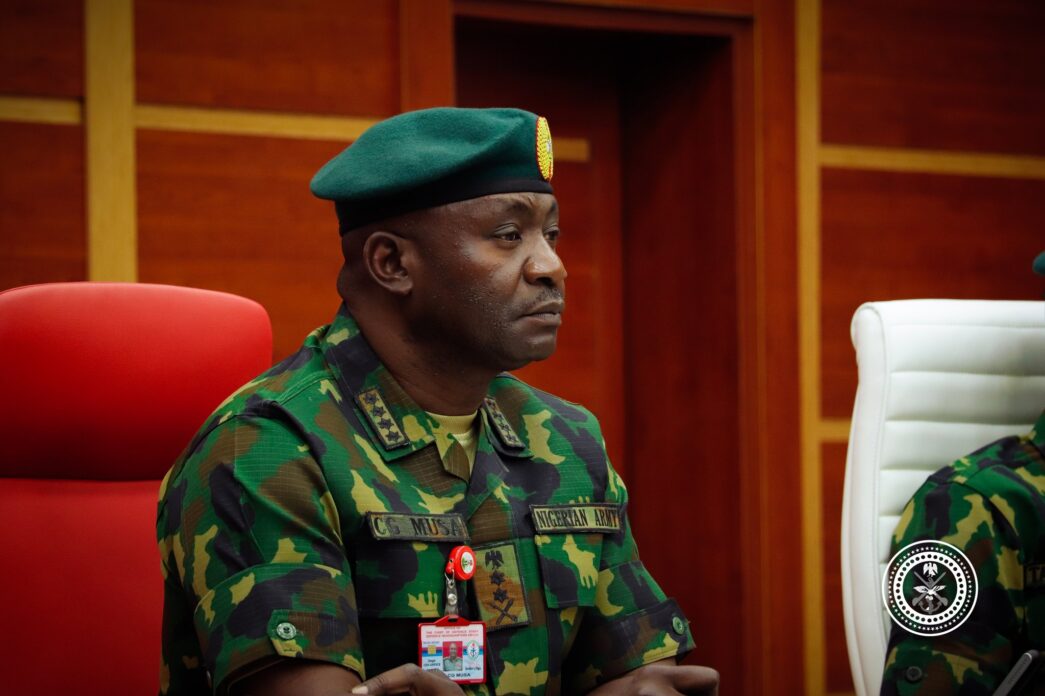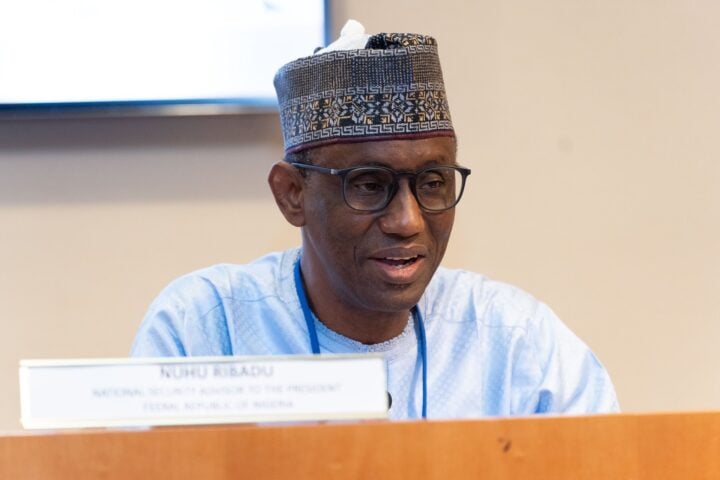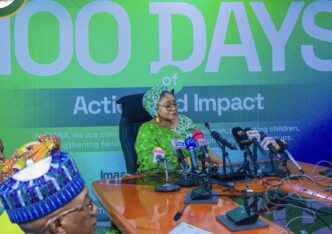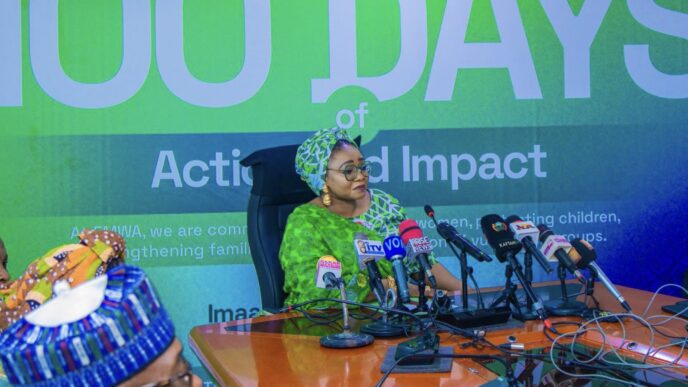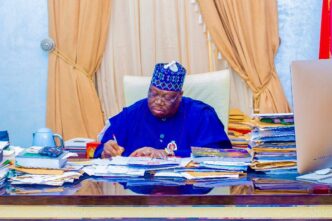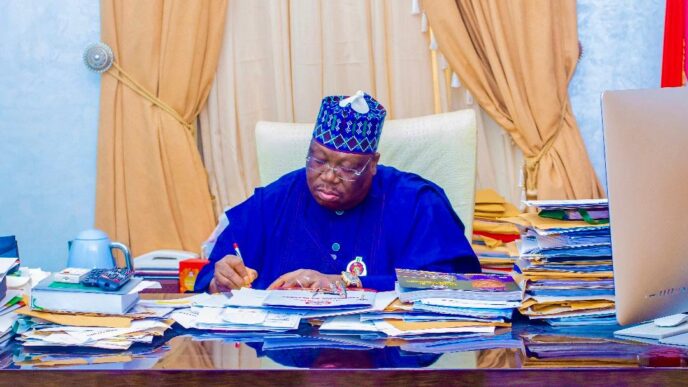Christopher Musa, the chief of defence staff
“All we need is to get the equipment that we are fighting with”
The quote above by General Christopher Gwabin Musa, Nigeria’s Chief of Defence Staff (CDS) during an interview in December 2024, exemplifies his position on the need for advanced foreign military technology- not foreign military bases, that will enable Nigeria comprehensively address its pressing security challenges. He also emphasized that while military kinetic force can address about 30 percent of the country’s security challenges, good governance and socioeconomic development provides 70 percent of sustainable peace and security.
But with Nigeria facing its worst cost-of-living crisis due largely to structural economic reasons, the chances of Gen. Musa delivering on his peace and security responsibility, while sourcing for foreign military technology, necessitate a defence policy framework that strategically aligns the drive for acquiring military technology with economic development goals. This strategic alignment will in essence, facilitate the restructuring of Nigeria’s economy away from its heavy reliance on petroleum resources for the bulk of non-debt government revenue and foreign exchange earnings, to an economy with higher science, technology and manufacturing based earnings- essentially, the ‘whole of society’ 70 percent for peace and security.
An analysis of the U.S. defence sector as one of the major drivers of the country’s position as largest economy and most developed in the world since the end of Second World War in 1945, and also the source for a significant part of Nigeria’s most advanced military equipment and needs, highlights 3 factors that the overtly very intellectual Gen. Musa can adopt in developing a new policy, or updating Nigeria’s National Defence Policy, to enable not just the acquisition and production of advanced military technology, but also practically supporting the restructuring of Nigeria’s economy. They are, reforming the Nigerian military as a Science, Technology & Innovation (STI) organization; promoting a new migration policy that attracts talent; and increased collaboration with research and development (R&D) ecosystem for sustainable STI financing.
Advertisement
For the military as STI organisation, the U.S. military is by some assessment and extrapolation, responsible for making the U.S. the world’s largest economy through funded R&D, given that U.S. tech firms such as Google, Microsoft, Meta, Nvidia, Amazon and IBM are among the biggest global firms, with cumulative market capitalization value of over $15 trillion. Two examples can explain this. First the Internet. It has origins in the ARPANET as developed by the U.S. Department of Defense through the Defense Advanced Research Projects Agency (DARPA) during the Cold War. DARPA works with industry, government, and academia to research and develop new technologies. Many aspects of networking, hardware and software companies, especially in Silicon Valley, leveraged from outcomes of this technology, and Meta is leading the development of Metaverse or ‘new Internet’. Second is semiconductors. Semiconductors, which are essentially the building blocks of all modern technologies such as mobile phones, consumer electronics, artificial intelligence (AI), automobiles and spacecraft, have most of its documented origins in research funded by the U.S. Defense, including a research grant in March 1942 from the Office of Scientific Research and Development, a unit of the National Defense Research Council. Therefore, the semiconductors that powers Microsoft, Google, Meta, AI, automobiles, mobile phones, oil rigs, agricultural tractors, spacecraft, military weapons, warships, airplane, engines, and any relevant technology have a significant part of its technology base from the U.S. defense sector.
For Nigeria’s military under Gen. Musa, it therefore requires a reconceptualization of the role of military technology and partnerships beyond military technology, for addressing not just Nigeria’s pressing security challenges, but also for the larger economy. Purchasing military technology requires economic resources, so sustainable defense spending requires a thriving economy. Such reconceptualization by General Musa could see a new doctrine approach for the Engineering Corps of the Armed Forces of Nigeria (AFN) that includes the Army, Air Force and Navy, beyond military recruitment and foreign procurement. Some elements of this exist in the recent past when Nigerian Air Force (NAF) procured spares from Innoson Vehicle Manufacturing (IVM) in 2016 under Air Marshal Sadique Abubakar as Chief of Air Staff. The partnership saw IVM produce spares for NAF fighter jets, especially Alpha Jets, which enabled Nigeria to sustain its fight against counter-insurgency operations, at a time NAF was unable to procure spares from foreign companies.
There is also the ‘Ezugwu MRAP’, Nigeria’s first indigenous Mine Resistant Ambush Protected (MRAP) tanks, named after Maj. Gen. Victor Ezeugwu, who designed and initiated the armored personnel carrier, and built by Defence Industries Corporation (DICON) in collaboration with the Nigerian Army Command Engineering Depot in 2019. While it is impressive to see that General Musa has expanded this domestic MRAP manufacturing with local companies such as ProForce, the recent observation by the Chief of Air Staff at the CDS Joint Task Force Commanders Conference 2025 about the inability of the Air Force to internationally procure spares for its Mi attack helicopters due to geopolitics, highlights the need for the sustenance and expansion of partnerships between NAF and IVM Nigeria, for sustainable peace and security. With Nigeria spending 65 percent of revenue on debt servicing and rising due to a devalued currency, additional comments by the Air Force chief that $11 million is required for retrofitting a single attack helicopter, demands a medium-to-long term R&D contract and partnership arrangement with domestic companies such as IVM, whereby within 4 years, most of these helicopters can be substantially retrofitted in Nigeria, to support sustainable NAF operations.
Advertisement
With semiconductors being the building blocks of military technology and industrial manufacturing, there is need for the defence sector under General Musa to consider the formal establishment of a semiconductor industry in Nigeria, especially as geopolitical tensions between the US and China over the technology has provided some countries in the global south such as Vietnam and Malaysia, the opportunity to establish semiconductor industry in their country. In Africa, the US government through the US Trade and Development Agency (USTDA) had in May 2024, signed an agreement with STL Kenya, that strategically supports the expansion of semiconductor ecosystem in Kenya. Therefore, engaging Nigerian talents such as Prof. Ndubisi Ekekwe, a patented practitioner in the industry and founder of FASMICRO semiconductor company, an Intel certified FGPA partner for Africa, who has some experience in supporting countries such as Russia in semiconductor development- before Western sanctions against Russia, is worthwhile. Ekekwe is also the founder of Tekedia Capital, a successful technology-anchored venture firm. As Nigeria does not have excess funds for ‘mistakes’ that consume funds in R&D, incorporating talents such as Ekekwe who have both technology and business experience that can guarantee some level of return on investment into the reconceptualized AFN Engineering Corps, or broader Nigeria Defense Industry, makes economic sense. There is also the very outstanding material scientist Prof Oluwole Soboyejo, the current President of SUNY POLY University. Prof. Soboyejo as engineering talent, and SUNY Poly that has semiconductor technology partnership platforms that Nigeria can harness in its drive towards a feasible semiconductor industry, are additional feasible options for the defence sector to participate in a sector with sales of $627.6 billion in 2024, which is an increase of 19.1 percent compared to the 2023 total of $526.8 billion, and estimated to be over $1 trillion in 2030.
Arguably, Nigeria’s largest technology burst was occasioned by the GSM and ICT reforms of 2001, plus the approval of the Nigeria Space Policy and establishment of NIGCOMSAT in 2006 by President Obasanjo, who is from the Nigerian Army Engineering (NAE) Corp. NAE has also produced former Senate President David Mark, Maj. Gen. Sam Momah a former Science & Technology Minister, Lt. Gen. Azubuike Ihejirika ex Chief of Army Staff, among others, and therefore can hold its own when reconceptualized as part of the elite corps of the military, with staffing and collaboration that go beyond the military.
Nigeria’s defence spending has risen from $0.67 billion in 2005 to a record $3.11 billion in 2023, making Nigeria the biggest defence spender in sub-Saharan Africa, and the third highest in Africa. If the wider Nigerian economy feels the impact of such large spending with spin-off technological products and innovations that create civilian jobs and real sector manufacturing growth- essentially an economy restructured away from oil and gas as primary government revenue sources, then it becomes more feasible and easier to justify increased defence spending.
Defense partnerships with leading countries such as the U.S., can support this drive of Nigeria’s military reconceptualized as an STI promoting organization, with prospects for economic restructuring. India, a country in the global south provides an example. With the country’s ‘New Framework for the India-U.S. Defense Relationship’ 2005, the Defense Technology and Trade Initiative (DTTI) 2012, the India-U.S. Declaration on Defense Cooperation 2014 and Framework for the U.S.-India Defense Relationship 2015, India was designated as a U.S. Major Defence Partner in 2016. Due to its partnership designation, India was elevated to Strategic Trade Authorization tier 1 status in 2018, and therefore receives license-free access to a vast array of U.S. military and dual-use technologies. Both countries also have the Logistics Exchange Memorandum of Agreement (LEMOA), Communications, Compatibility and Security Agreement (COMCASA), and the Industrial Security Agreement (ISA) instituted, which enabled the Foreign Military Sales (FMS) and Direct Commercial Sales (DCS) processes that have led to U.S. defence trade with India grow from almost zero in 2008 to over $20 billion in 2020. India currently exports aircraft and helicopter parts to U.S. global defence majors such as Lock Heed Martin and Boeing, and also exports a lot of software and electrical equipment used for defence purposes to France.
Advertisement
India participates in the ‘Exercise MALABAR’ with the U.S. Navy as part of its military partnership, similar to the ‘Exercise Obangame Express’, a maritime exercise around West Africa’s maritime coast conducted by the U.S. Navy and United States Africa Command (AFRICOM), which Nigeria and some neighbouring countries participate in. Therefore, Nigeria can be more strategic by going beyond joint AFRICOM exercises to seek defence partnerships that provides access to U.S. dual-use technologies and other technologies, for the development of not just its military, but also industrial sector, leading to economic restructuring. With that, it its hoped that Nigerian industrial sector and engineers will be able to manufacture some of the equipment required by AFRICOM. Nigeria can also pursue such partnerships with other countries with advanced tech sectors.
The rescoping of Nigeria’s military to include STI, especially with the enhancement of its engineering corps, leads to next strategic flank for Gen. Musa- migration policy. At present, though the new U.S. President Donald Trump campaigned on strong anti-immigration policies as part of Make America Great Again (MAGA) philosophy, Elon Musk, founder of Tesla/SpaceX and one of Trump’s major supporters who heads the Department of Government Efficiency (DOGE), has argued for the retention of the H-1B migrant work visas, if the U.S. is going to continue to attract and retain engineering and STI talent, to sustain the country’s global technology and economic dominance. Musk is ready to ‘go to war on this issue’, and there is substantial historical evidence to support his perspective on migration policy and global tech dominance by the U.S.
‘Operation Paperclip’ was a secret U.S. government migration program between 1945 and 1959, through which over 1,600 German scientists, engineers, and technicians were taken from the former Nazi Germany to the U.S. for government employment after the end of World War II, with an estimated 1,800 technicians and scientists, and 3,700 family members migrating from Germany to the US in 1947. Wernher von Braun, who was the chief architect of the Saturn V launch vehicle that enabled human missions to the moon, and also one of the most acclaimed heroes of the success of the National Aeronautics and Space Administration (NASA), moved to the U.S. under this program. Adolf Busemann, who was responsible for the swept wing that improved aircraft performance at high speeds; Herbert A. Wagner, the inventor of the Hs 293 missile; and other engineers on the Osenberg List that developed the V-2 rocket, migrated under this program. The Russian led Soviet Union had its own migration program known as ‘Operation Osoaviakhim’ through which over 2,500 Nazi German scientists, engineers and technicians, as well as about 4,000 of their family members, were moved to the Soviet Union, and contributed to development of science, technology and defence industry of the Soviet Union, as the Cold War was commencing.
Still on migration and tech innovation, the liberal but controlled migration policies of the U.S. from many decades ago encouraged the Jewish forebears of Mark Zuckerberg, Sergey Bein, Larry Page, Jan Koum, Robert Oppenheimer, and later Albert Einstein among others, who are responsible for Facebook, Google, WhatsApp, the nuclear bomb among other innovations, to migrate and find the succour to thrive in the U.S. Also, immigrants and those with migrant background played key roles in the development of covid-19 vaccines in the U.S.
Advertisement
Particularly in the semiconductor and advanced computing sector, this migration policy attracted Morris Chang and Jensen Huang to the U.S. Morris Chang, founder of Taiwan Semiconductor Manufacturing Company (TSMC) the world’s largest semiconductor foundry with total assets of $170 billion and responsible for over 90 percent of the most advanced chips, as well as most of the chips used by Apple Inc, studied and worked in the U.S., due to favourable migration policy that enabled talents to study and subsequently reside in the U.S, from his origin in China. Jensen Huang, Co-founder and CEO of Nvidia Corporation, one of the most advanced semiconductors, AI hardware and software companies with market value of over $3 trillion, has Taiwanese immigrant background, but is currently American.
For emphasis, migration policy advocacy will not be out of place for a military chief like Gen. Musa, as the U.S., the country with the world’s most powerful military has migration as part of its military human resource management strategy. The ‘Brown Card’ policy by the then Interior Minister Rauf Aregbesola in May 2023, as well as the Nigerian Citizenship Bill, 2025 (SB. 705) sponsored by Senator Shehu Lawan Kaka and passed first reading at the Nigerian Senate on February 13, 2025, are some of the existing institutional prospects that Gen. Musa can leverage to promote migration policies that attract and retain top talent to Nigeria from other countries. That Aregbesola has an engineering background may demonstrate his understanding of migration in talent management for technology development.
Advertisement
The third tripod of the proposed strategy for Gen. Musa is on STI policy and funding. That the Federal Ministry of Science, Technology & Innovation receives some of the lowest budgetary allocations and is not considered among the more politically elite government ministries, alongside the funding limitations faced by universities and research institutions, demonstrate the challenges with funding STI funding in Nigeria. Therefore, the political realities require that Gen. Musa explores other avenues and pathways within the ecosystem. One of such avenues is the ‘Strengthening the Research and Innovation Funding Agencies (SRIFA) West Africa Project, as part of the Science Granting Councils Initiative (SGCI) of IDRC Canada. SRIFA is designed to institutionally and sustainably strengthen STI funding in Nigeria and West Africa, and is led by practitioners such as Prof. Azikiwe Onwualu, immediate past President of Nigerian Academy of Engineering and former Director General of Raw Materials Research and Development Council (RMRDC). Getting the defence sector involved in the ecosystem ensures sustainable improvement of existing domestic military technologies such as light tanks, MRAP Ezugwu, IVM spares supply, as well as continuous R&D for new technologies.
Reconceptualising the role of the military engineering corps may be challenging for Gen. Musa, an infantry officer. However, the frontline contributions of combat engineering soldiers in some of the most advanced militaries, plus his promotion of ‘whole of society’ approach for 70 percent of peace and security, demonstrates his intellectual disposition to change. His intellectual disposition seems similar to one of his predecessors and former Chief of Army Staff, General Martin Agwai, who also excelled internationally with the United Nations (UN), and not surprisingly, went on to become Pro-Chancellor and Chairman of Governing Council of Bingham University, as well as a Visiting Professor at the African Leadership Centre, King’s College London.
Advertisement
Such intellectual disposition is required to also avoid mistakes of the past, where technologies that could have been expanded upon after the Nigerian Civil War, such as ‘Ogbunigwe’, which were a series of weapon systems, IEDs, rocket propelled missiles, by a team of scientists that included Dr. Felix Oragwu, were not harnessed. Dr. Oragwu, who schooled in Britain and Canada, but acquired extensive nuclear science and technology training in Germany, required some collaboration with the Artillery Corp of Biafran Army as part of the development effort, before the weapons could be deployed. Similar circumstances existed with petroleum refining technology, but unfortunately, Nigeria currently lacks all these technologies and has to import them at prohibitive cost. Although General Gowon as Head of State later transferred Dr. Oragwu from the academia to become Chief Scientist in what became the Ministry of Science and Technology, where he spearheaded policies and agencies such as National Agency for Science and Engineering Infrastructure (NASENI), National Office for Technology Acquisition and Promotion (NOTAP), Projects Development Institute (PRODA) and Federal Universities of Technology in Yola, Owerri, Makurdi, among others, the military technology that could have saved huge forex spent on defense importation, as well as spur other productive parts of the economy, was sustained. The U.S. and Europe in contrast, are examples of countries that expanded on technologies especially from World War II.
The praxis for military technology in the U.S. and other leading countries shows its multi-locational nature, to maximize many advantages. For Nigeria, DICON Kaduna with its new legislation requires more support for growth, while some of the envisaged new tech manufacturing also requires consideration of expanded factors. These factors constitute a checklist that partners consider in their feasibility studies, before making real investments. They include the availability of highly skilled human resources; financial and material resources; alongside academic and industrial collaboration for sustainable R&D- all within close proximity. For material resources, contemporary tech manufacturing requires a lot of water and electricity- factors to stress for Nigeria, plus high skilled human talent. If these fundamentals of location that represent checklist for feasibility are not in place, it becomes almost impossible to attract the necessary investment, similar to what STL Kenya received from the U.S. government in 2024 for semiconductor manufacturing.
Advertisement
Given Nigeria’s contemporary circumstances, an example of a feasible approach to military technology, that can also serve other economic and industrial purposes will generally involve acquiring affordable and not so advanced technology from e.g. the U.S., and then getting local talent to understand and reproduce, with R&D that ensures continuous innovation. Also, the achievements of DeepSeek, with its DeepSeek-R1 model AI chatbot released in January 2025, that has surpassed ChatGPT as the most downloaded app on iOS and Android, show what can be attained with significantly less financial resources and without access to the most current semiconductor chips.
For the Nigerian military, getting these manufacturing factors together in expanded locations- but within military sphere throws up locations such as the Admiralty University of Nigeria in Ibusa, Delta State, owned by Nigerian Navy, with an additional campus at the Nigerian Navy Engineering College, Sapele, Delta State. For material resources, Delta state is coastal, with large rivers such as River Niger and the Atlantic Ocean providing access to large water volumes required for modern tech manufacturing. It has four maritime ports namely; Warri, Sapele, Koko and Bururtu, as well as two functional airports with regular flights at Asaba and Osubi, which provide port access for import, export and travel. For electricity, the state has the Transcorp Power 972MW Ughelli Power Plant, Sapele II 507.6 MW Power Plant and Kwale Okpai 408 MW Power Plant, while its abundant natural gas resources provide a sustainable base for energy expansion, alongside the proposed $20 billion Ogidigben Gas Project/ Gas Revolution Industry Park (GRID).
For sustainable supply of human talent, national test scores show Delta state is centrally located to states and areas with highest national test and exam scores, plus school enrollment especially in STEM. The state has approved export processing zones at Koko and Kwale, with Kwale also having an Industrial Park. For financing, the founders and chairmen of Zenith Bank and UBA Bank, which are Tier 1 international banks with branches across different countries and continents that can provide some financial partnership and advisory support, have major presence in the state. The state has been a major location for international economic and financial activities from colonial times with firms such as British UAC, and has been host to major international oil companies (IOCs) such as Chevron, ENI/Agip, SEPLAT and Shell. Beyond the significant financial earnings the IOCs have provided the state, companies such as Shell with its Dutch affiliations, can be handy in convincing big tech firms such as ASML Holding N.V. to support some level of technology transfer and equipment required for semiconductor manufacturing, as the case may be.
The state also has sufficient military human capital to nurture and sustain defence investments. The State Council of Traditional Rulers is headed by the retired infantry general and ECOMOG Field Commander, HRM Felix Mujakperuo (Orodje of Okpe Kingdom, Orhue I). It is also home to Vice Admiral Dele Ezeoba rtd, a former Chief of Naval Staff, who should have R&D oversight experience as Board of Trustees member at American University Nigeria, Yola. Also within the state are predecessors of Gen. Musa as CDS, General Alexander Ogomudia and General Lucky Irabor, both from Army Signals Corps, with engineering academic degrees that come in handy in overseeing tech manufacturing.
General Musa’s quest for military technology could have the unintended consequence of facilitating the development of science and technology in a manner that supports Nigeria meeting her ‘manifest destiny’. Though President Dwight Eisenhower, who was Supreme Commander for Allied Forces in Europe during World War II expressed some reservations about the U.S. Military Industrial Complex (MIC), it is safe to assume that he would be proud today of how the internet, semiconductors and other technology advances with U.S. defence origins have enabled and sustained U.S. global economic and defence aspirations. General Musa can through the reconceptualisation of Nigeria’s military as a science technology and innovation driven organization, promote appropriate migration policies, and increase focused collaboration with R&D ecosystem, enable Nigeria sustainably meet its military technology needs. Similar to how the MIC may have unintentionally made the U.S. consolidate global economic power, Musa’s quest for military technology can also lead to Nigeria’s economic restructuring towards meeting national aspirations.
Uwanaka writes from African University of Science and Technology, Abuja. [email protected]
Views expressed by contributors are strictly personal and not of TheCable.
Add a comment
